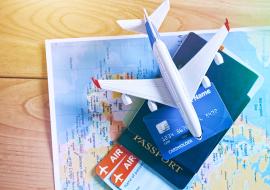Cuban Economy Climbed 3 Percent in 2004
The Cuban economy will kiss 2004 goodbye with a 3 percent increase, even in spite of all the strain the island nation’s hard-currency reserves have been under for most of the year, and regardless of unshackled inflation and infrastructure hardships that have affected the population’s living conditions, a governmental report indicated this week.
The report –a copy of it was obtained by Reuters News Agency- says local tourism was up in double digits, while building grew 7.2 percent and the sugar industry tabbed a 15 percent increase. Other highlights were mining (up 4.6 percent) and state-run services with a 4.2 percent upturn.
The report, put out by Cuba’s Ministry of Economy and Planning, goes hand in hand with recent remarks made by Central Bank Chairman Francisco Soberon who ventured to put the island nation’s economic growth in 2004 at 2.6 percent.
The longstanding lack of hard-currency funds in Cuba, however, made things worse for the local economy this year. Higher oil prices, shortage of foreign investment, skyrocketing interest rates, a galloping foreign debt and the need to pay foodstuffs bought in the U.S. in cash also made a dent in the country’s chances for bigger growth.
”The country was hit by two hurricanes this year and is still enduring the worst draught of the past 40 decades,” the report states. The tightening last June of the travel ban imposed by Washington, together with other restrictions the Bush administration is toying with to stifle the island’s economy, are also elements worth considering, the report says.
In the same breath, the value of the Cuban peso went up by 3 percent. The government of President Fidel Castro was bound to raise prices in dollars-only stores –where Cuban nationals stock up on such commodities as cooking oil, canned food and soaps- by as much as 15 percent this year.
Last November, the convertible Cuban peso nudged off the greenback as the currency of choice on the island nation. Those who still own dollars or get money remittances from overseas in Uncle Sam’s bank notes must now pay a 10 percent levy when they decide to change their dollars into Cuban pesos.
Tourism sales tallied up $2 billion and money remittances verged on the $1 billion mark. The report concluded that the country’s budget deficit and current account shortfall stayed pretty much the same as compared to the numbers posted in 2003 (3.5 and 3 percent of the GDP, respectively).
The Economic Commission for Latin America and the Caribbean (CEPAL) reported that Cuba’s foreign debt climbed to $11 billion in 2003. Havana stopped providing information on its foreign debt and current accounts in 2002.














